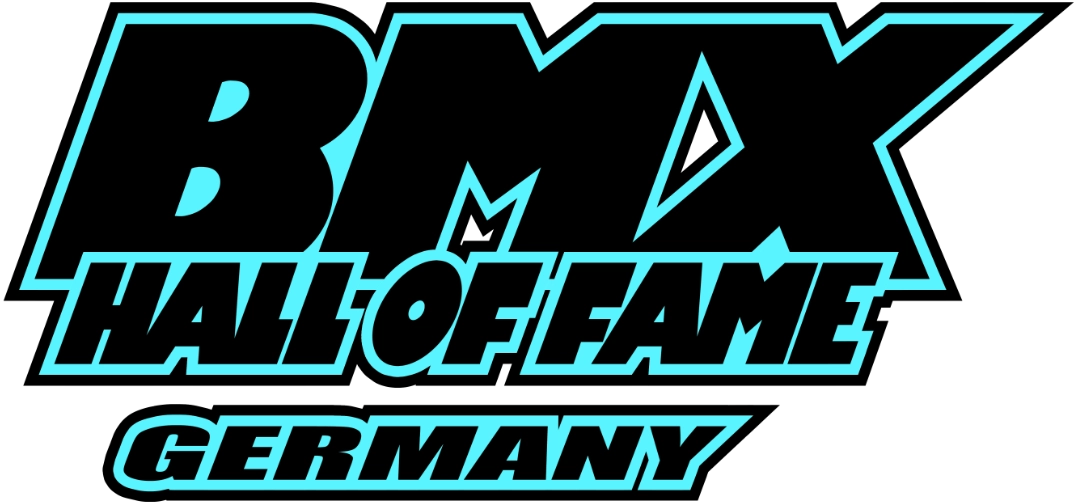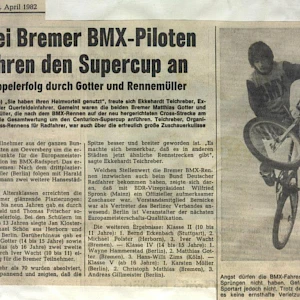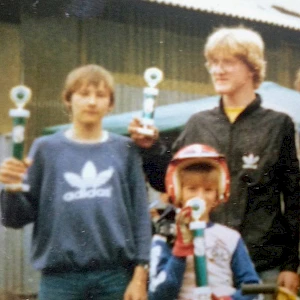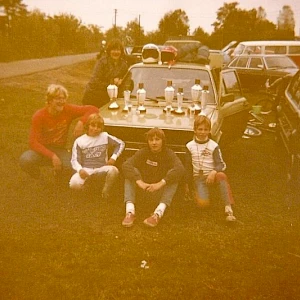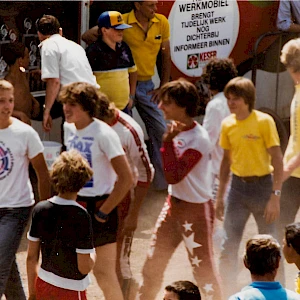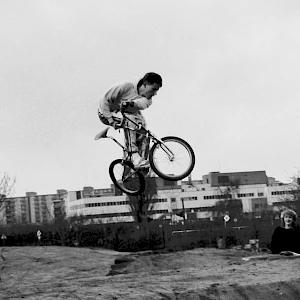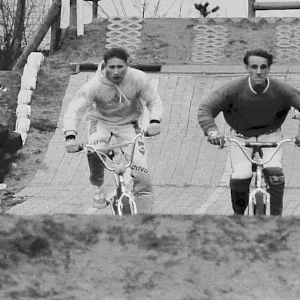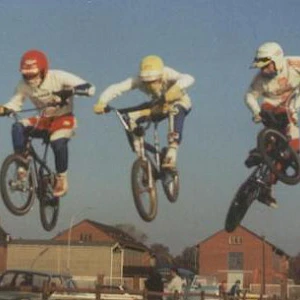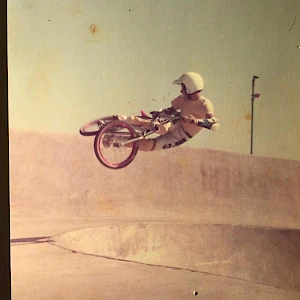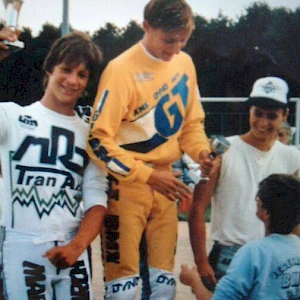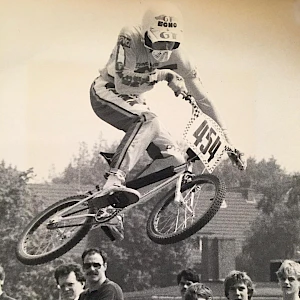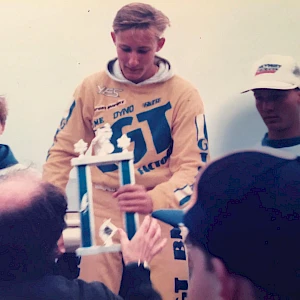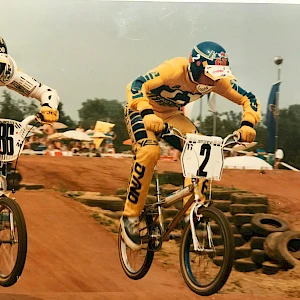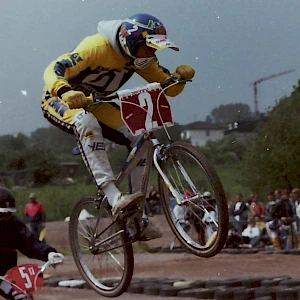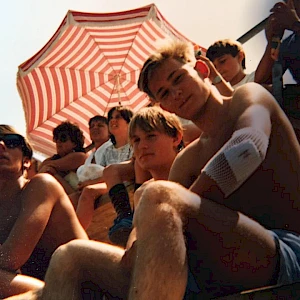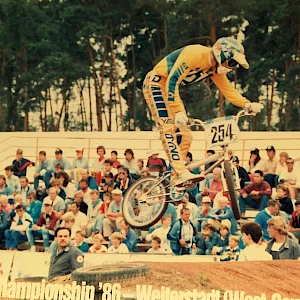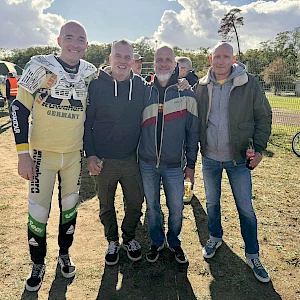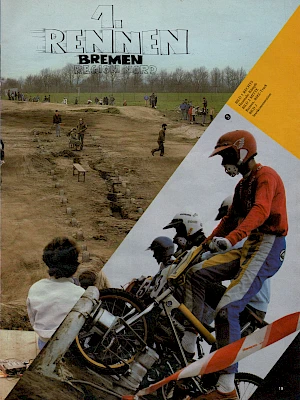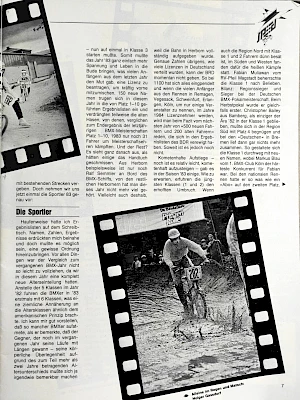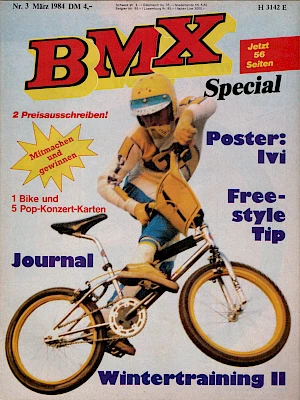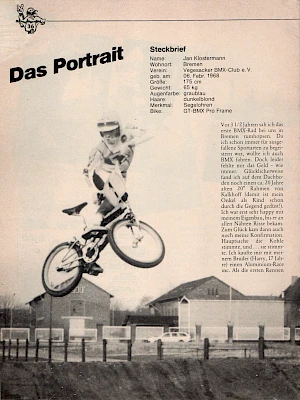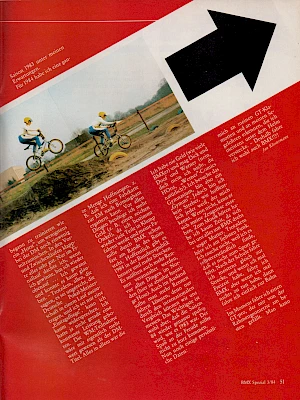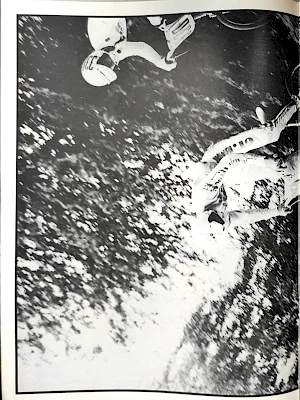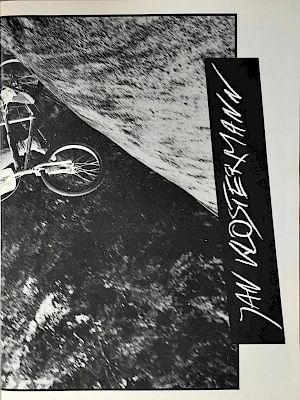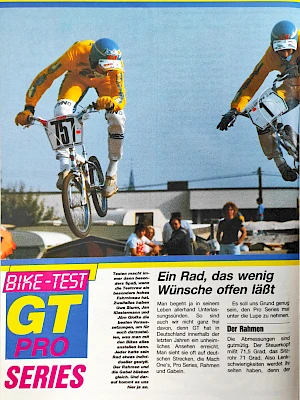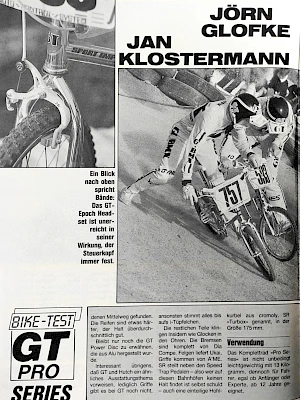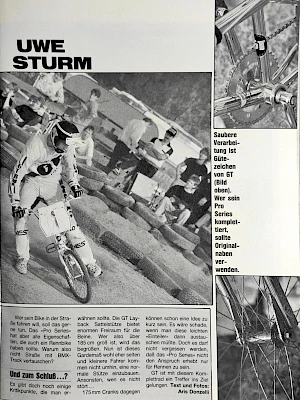Jan Klostermann

It was actually the Klostermann brothers' two uncles who laid the foundations for Jan's BMX career: they rode through the woods on converted 24-inch bikes back in the 1960s and provided Jan with the bike for his first race.
But first Jan and his brother Harald rode their teenage bikes through Knoops Park in the north of Bremen, not far from where the BMX track would later be built. Harald discovered Ekkehardt Teichreber's bike shop and, inspired by what he saw there, began to remove all the superfluous parts from his bike. A BMX scene was slowly developing at Teichreber's: a few boys were competing on a wooden board on a wasteland next to the shop. Jan was enthusiastic and a welcome guest: a featherweight who managed to cover astonishing distances.
That was in 1980 and the first BMX bikes and parts slowly found their way to Bremen. Ekkehardt's son Andreas Teichreber probably had Bremen's first BMX bike and Teichreber himself regularly travelled to the Netherlands in his Kadett GSI to meet Gerrit Does and Pierre Karsmakers, who had imported BMX from the USA. When he came back, his boot was always full of BMX parts and frames, which sold like hot cakes. Jan got a 20-inch children's bike from his uncle, which he converted into a "proper" BMX bike: a crossbar attached to the handlebars with clamps, a pair of new, far too heavy steel rims and, of course, decent studded tyres.
Seine Heimat bekam der Bremer BMX Sport dann ausgerechnet, als Jan und Harald mit ihrer Mutter im vierwöchigen Sommerurlaub waren: Ekkehardt hatte von einem Freund im Bauamt eine Wagenladung Erde und das berühmte Stück Land am Grohner „Oeversberg“ bekommen und innerhalb kürzester Zeit den Grundstein für die erste BMX-Bahn Deutschlands gelegt.
Emulating the Dutch, the always pragmatic Teichreber began preparations for the first race at the beginning of 1981. A megaphone, a few metres of fluttering tape and a couple of Neptune hooks were all that was needed to give the whole thing an official look. In addition to the now considerable scene on the Oeversberg, guests from Cologne and Frankfurt also came to the exciting races. Jan was also at the start, which at the time was still organised with a flutter line instead of a gate. However, the limits of his converted children's bike were tight, so he had no chance against the competition, who were already riding Redline or Mongoose.
However, salvation was at hand: the confirmation brought money into the Klosterman's coffers, and after Jan won the second race on a bike borrowed from Teichreber, he and his brother invested in a brand new red Race Inc. frame and a collection of new and used parts. They shared the DM 700 bike and started the 1982 BMX season.
BMX was everything. The great photos of the pros in the American magazines, the visits from the Berliners, many of whom already had rad bikes like JMC and Hutch. The first away races, to which Jan crawled over the Kassel mountains in Wolfgang Fritscher's 50 hp van in order to be there on time the next day. All this contributed to the fascination of the new sport, which finally went through the roof with the release of the film ET. The Centurion Super Cup, a race series organised by Teichreber and Wolfgang Renner, did not go so well for Jan, but by 1982 he was winning almost all the races he took part in.
He missed out on the German championship title at the end of 1982 by just one point and had to settle for runner-up. Instead, he took part in the very first European Championships in Beek-En-Donk in the Netherlands, a great experience for him and the entire German BMX scene, which had little chance in the races, but got a first impression of BMX racing on the international stage and was able to catch a glimpse of American professionals.
In the meantime, the Race Inc. frame had had its day and Jan briefly switched to the well-known, heavy Mongoose frame from Andreas Teichreber before buying his first GT frame from Fritscher at the beginning of 1983. With a new bike and fresh GT kit, which he had taken over from Andreas "Elle" Gillmeister, Jan won the 1983 German championship in front of his home crowd, although the class classification at the time forced him into a group with older riders. But Jan was used to this, as most of his training partners were one to two years older than him. As often the smallest man at the start, he had learnt to compensate for his lack of physical mass with technique and cadence.
BMX had now taken on considerable proportions in Bremen-Grohn. The "Vegesacker BMX Club", founded by Teichreber in 1981, became a real club when the BDR moved into BMX and Jan's mother Margarete Schmidtmann also became involved. She was appointed secretary of the club and later took on the task of representing the BDR in the international organisation IBMXF. She was also responsible for allocating numbers in the Bremen regional association, and thus perhaps also for her son's strikingly pretty start numbers.
On a school trip to Berlin in early 1984, Jan visited Michael Müllmann in his shop Instant Funk, who offered him a co-factory sponsorship for GT. Jan was overjoyed. After all, GT had always been his brand. He liked the colours, and Greg Hill was perhaps the only rider who was something of an idol to him. Jan rode many races, won the Easter Cup and was promoted to GT Full Factory status. This was followed by participation in the European Championship in Birmingham, where Jan, who was in first place in the semi-final, was brought down by the later 1985 world champion, Geoff Schofield, in a completely senseless manner. Looking back, he was not really satisfied with the year. He finished the DM in Weiterstadt in 7th place and devoted himself to training again over the winter.
This was because the sport now required a rigorous training programme. In addition to school sports and training sessions with the "grinder", as they affectionately called their trainer, Detlef Gotter, he went running in Knoops Park and sneaked into Teichreber's cellar in the evenings, where he had some training equipment that Teichreber had welded himself. A-levels were just around the corner and Jan worked hard to juggle everything. But it was worth it. In June of that year, he won the German championship title in Itzehoe, having won almost every one of his motos. Shortly afterwards, he went to the European Championships in Barcelona and then straight to the USA, where he raced in the greater LA area and travelled to the World Championships in Whistler, Canada, in the GT-owned Winnebago motorhome. Completely blown away by these experiences, he returned to tranquil Bremen. He finished the year with a second place in the Autumn Cup, but he could feel how burnt out he was becoming. All around him, people were enjoying their free time and partying, while he had to take part in every shitty village race in all weathers. He managed to pass his A-levels by the skin of his teeth, but earning money with BMX was out of the question. On the contrary: the meagre prize money he sometimes received at races was eaten up twice over by travelling, accommodation and entry fees. He received little support from his sponsor to take part in international races. It was a constant hustle and at some point Jan realised that outside the BMX world it was comparatively easy to earn 100 marks with any job. At least you didn't have to train for half a year.
Although he had to return his GT Factory gear at the beginning of 1987, he switched to the Superclass, in which he took a respectable sixth place in jeans in the Autumn Cup. After unsuccessfully trying to fulfil his compulsory military service as a BMXer in a sports company, he hung up his BMX bike and dedicated himself to his training as an automotive mechanic and his studies in aerospace engineering. Today, Jan works as a key account manager and enjoys wrenching on old motorbikes in his spare time. He keeps in touch with the old-school BMX scene via various internet forums. The main thing he has retained from his BMX days is the international community and the desire to get to know foreign countries and cultures. But he also credits his time on the bike with his ambition and ability to push through and stick at it when he wants to achieve something.
As one of the first BMX racers in Germany, Jan Klostermann has accompanied the sport from the loosely tensioned leash to the fully automatic gate with traffic lights. He shaped the racing scene of the 1980s with his distinctive style and impressive cadence and was inducted into the German BMX Hall of Fame in 2025.
- Born 1968
- First race in Bremen in June 1981
- German runner-up 1982
- German Champion 1983
- German champion 1985
